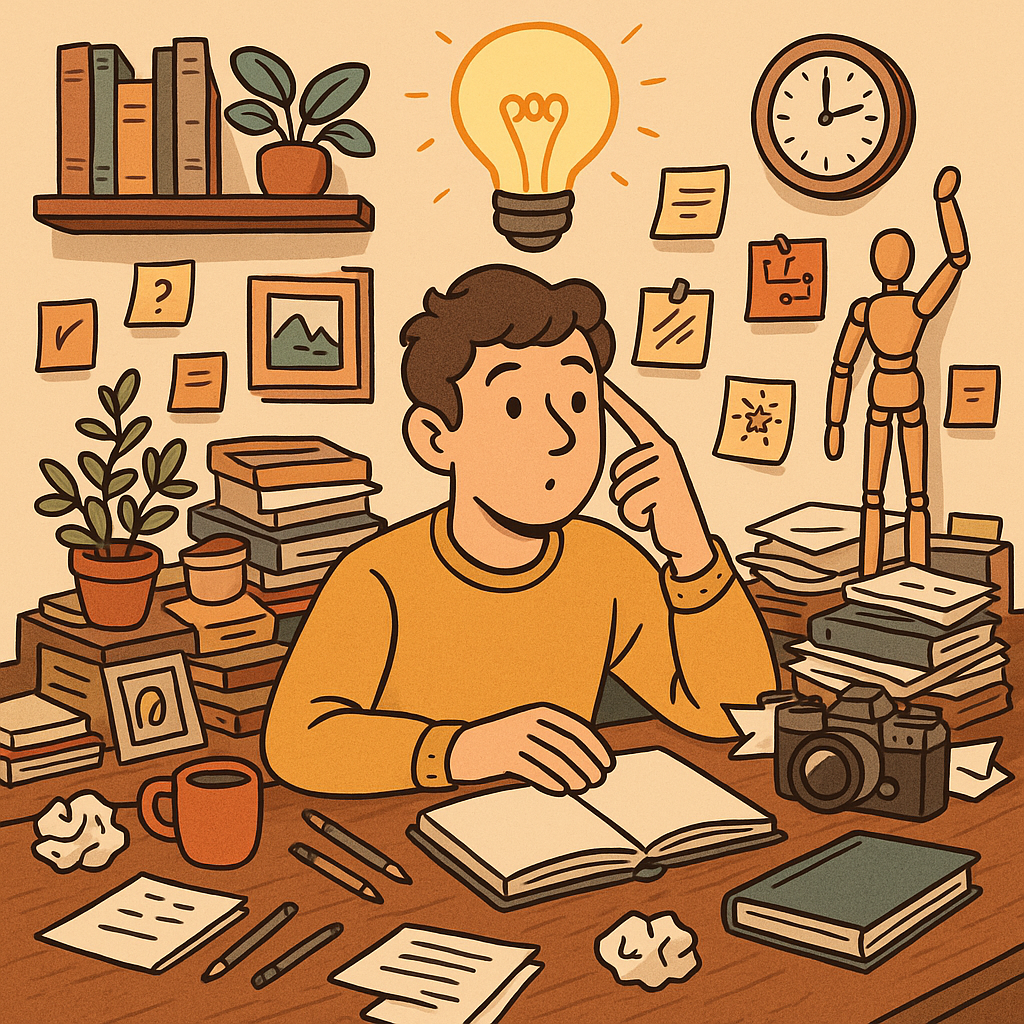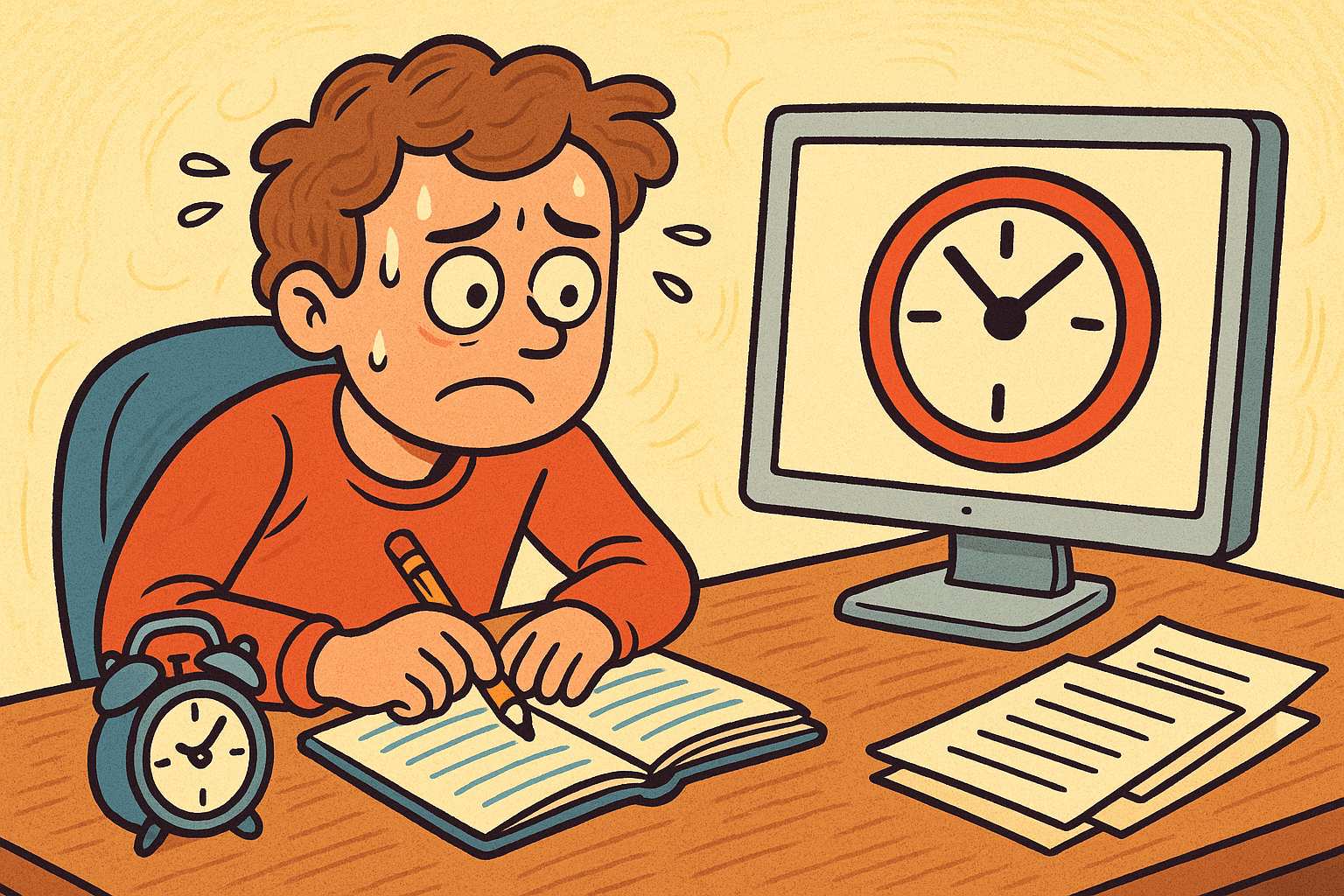Curated clutter—the intentional display of meaningful items—can actually ignite creativity by offering visual prompts and emotional cues. Explore why working amid organized chaos might be the innovation boost you’ve been looking for.

What is Curated Clutter?
“Curated clutter” refers to a deliberate collection of lived-in objects—books, trinkets, art pieces—arranged thoughtfully rather than assembled haphazardly. Unlike chaotic mess, it reflects personality and history, serving as a visual and emotional playground.
House Beautiful highlights this emerging decor trend: searches for “eclectic maximalism” have surged over 215%, with “vintage maximalism” up 260% year-over-year. Intentional displays of keepsakes aren’t just aesthetic—they’re trending in home design for 2025.
Why Curated Clutter Boosts Creativity
1. Visual Prompts & Novel Connections
A landmark study by the University of Minnesota led by Dr. Kathleen Vohs showed participants in messy rooms produced 28% more creative uses for mundane objects. Judges also rated their ideas as more original.
This supports the concept that curated clutter encourages associative thinking—random items spark unexpected ideas.
2. Emotional & Personal Anchors
IDEA design firm’s Andrew Stewart says his desk’s colorful knick‑knacks—some 25 years old—serve as emotional bookmarks, anchoring memories or feelings that prompt fresh thinking.
Every item may carry a story—a shared moment, past success, or personal milestone—triggering inspiration in the moment.
3. Balancing Novelty with Order
True clutter can overwhelm. But curated disorder—“messy orderliness”—supports creative leaps while maintaining enough structure to avoid distraction.
Psychology Today notes the best creative environments strike a balance: enough stimuli to ignite bold thinking, but not so much to breed anxiety .
Science-Backed Benefits at a Glance
| Benefit | Supporting Findings |
|---|---|
| Diverse visual cues | Vohs’ lab experiments showed 28% more creative idea generation in messy settings |
| Emotional resonance | IDEO designer’s curated items reflect emotional triggers and memory anchors |
| Enhanced mental flexibility | Messy environments promote breaking from norms and conventional patterns |
Trend Alert: Why 2025 Loves Curated Clutter
- “Cluttercore” home decor: FT notes the rise of maximalist, curated displays where objects are grouped by theme or texture to avoid visual chaos.
- “Museum of you” spaces: A Times article emphasizes intentional displays of heirlooms to tell personal stories—mirroring our desire for meaningful, idea-generating environments.
This isn’t just interior design—it’s about creating thought-friendly environments that inherently boost innovation.
How to Build a Creativity-Fueling Curated Clutter Zone
1. Choose a “Core” Object
Anchor your space with something personal—a vintage camera, photo, or award. This becomes the eye’s and mind’s starting point.
2. Curate Related Items
Add objects that complement the core: memorabilia, tech gadgets, art, or books that inspire.
3. Maintain Balance
Group items thematically (e.g., travel, design, childhood). Leave negative space so accents stand out without visual overload.
4. Rotate Periodically
Swap in fresh items to prevent stagnation and prompt new ideas.
5. Keep Functional
Separate creative zones from work zones. Your clutter should inspire, not interfere with focus or task completion.
Practical Applications: Guided Routine
- Start Small: Begin with a desktop corner.
- Add a Core: Maybe a globe or photo from a special trip.
- Layer Meaning: Include related items—souvenirs, sketches, mood-triggering tokens.
- Observe Your Mood: Are ideas flowing? Adjust density or item mix.
- Rotate Every 6 Weeks: Swap old items out to freshen your creative landscape.
Pitfalls to Watch
- Overload: Too much clutter can raise cortisol, leading to stress and decreased productivity.
- Personal Fit: As Psychology Today and Verywell Mind note, minimalist minds thrive in tidy spaces; curated clutter is best for novelty-seekers .
Personal preference matters: always test and tweak.
Curated Clutter vs. Digital Hoarding
Digital collections mirror real-life clutter. The same principles apply: organize emails, bookmarks, and files in intentional folders, retaining only those that inspire or serve purpose .
Curated digital clutter—like a well‑arranged Pinterest board or read‑later list—can also spark breakthroughs during creative work.
Real-World Example
An IDEO designer’s workspace was intentionally strewn with old toys, concept‑art books, and colorful trinkets. She says it keeps her “catalyzed,” helping generate new game prototypes.
This isn’t random—it’s curated chaos with practical purpose. Each object sparks unseen links and fresh thought.
Final Take
Curated clutter is more than decor—it’s an innovation strategy. Backed by studies, sentimental triggers, and current design trends, it delivers:
- Visual variety that inspires new connections
- Emotionally meaningful prompts
- Balance between familiarity and novelty
If your creative flow feels stalled, try bringing a carefully chosen object into your workspace. Let it spark curiosity, then build around it. With periodic refreshes and mindful restraint, curated clutter could be the nudge your next big idea needs.
References
IDEO. (2022). How Curated Clutter Makes This Designer’s Home Inspiring. IDEO Journal. Retrieved from https://www.ideo.com/journal/how-curated-clutter-makes-this-designers-home-inspiring
Guren, C. (2021). Give Your Creativity a Clutter Boost. CliffGuren.com. Retrieved from https://www.cliffguren.com/articles/give-your-creativity-a-clutter-boost
Vohs, K. D., Redden, J. P., & Rahinel, R. (2013). Physical Order Produces Healthy Choices, Generosity, and Conventionality, Whereas Disorder Produces Creativity. Psychological Science. Summary available via Open Culture. Retrieved from https://www.openculture.com/2022/02/the-psychology-of-messiness-and-creativity.html






